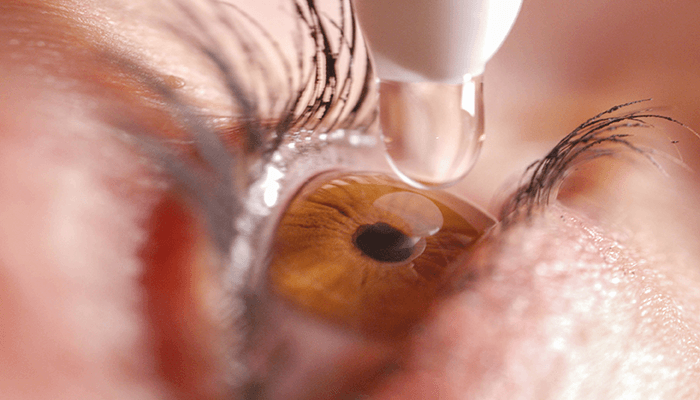
In vivo investigations. Researchers investigated small nerve fiber damage and inflammation at the level of the sub-basal nerve plexus in 28 patients whose BMI was in the severe obesity category, comparing the results of this group with those of 20 subjects in the healthy range through a cross-sectional observational study. Through this, they found that imaging using in vivo corneal confocal microscopy was a feasible and noninvasive method of detecting and quantifying occult corneal nerve damage and increased inflammation in patients with obesity (1). The results also suggested that, even in the absence of type 2 diabetes mellitus, obesity may be a separate risk factor for peripheral neuropathy. Link
Implant impact. The corneal cell density at three corneal positions was assessed over a period of five years after implantation of the XEN45 gel stent both with and without combined cataract surgery. The prospective, cross-sectional, non-randomized clinical trial used 155 eyes from patients of the University Eye Clinic Glaucoma Service Salzburg. In the solo surgery group, there was no significant change in the endothelial cell count over the five-year evaluation period, whereas the combined surgery group saw a significant cell count reduction at years two and four, indicating that XEN45 implantation, irrespective of placement, does not cause a large reduction in cell count (2). Link
New nominee. In response to the limited therapeutic options for diabetic corneal neuropathy (DCN), a research team evaluated the efficacy of fenofibrate, a peroxisome proliferator-activated receptor-alpha (PPAR)-α agonist, on the eyes of 30 patients with type 2 diabetes. After 30 days of oral fenofibrate treatment, in vivo confocal microscopy revealed significant stimulation of corneal nerve regeneration and a reduction in nerve edema, demonstrated by significantly improved corneal nerve fiber density and width and improvement of corneal epithelial cell circularity (3). Link
Grading guttata. An analysis of the prevalence and impact of corneal guttata (CG) in the graft after penetrating keratoplasty (PK) in Germany looked retrospectively at 1,758 instances of PK performed in 1,522 patients (4). CG were detected in nearly 15 percent of grafts after nine months; however, most were low-grade CG that did not affect visual acuity, but led to an increase in corneal thickness, loss of ECD, and alteration of endothelial cell morphology. Postoperative progression of CG severity was observed in 13.5 percent of cases. Link
Descriptions of detachment. Evaluating the feasibility of DMEK to treat spontaneous Descemet membrane detachment (DMD) decades after PK, researchers describe the clinical characteristics and therapeutic surgical approaches taken in six eyes of five patients with DMD – presenting clinical images, anterior segment OCT scans, and histological findings (5). Their case series demonstrates DMEK as a viable option in eyes with spontaneous DMD after PK; however, visual outcome is limited by persistent high astigmatism in the ectatic cornea. Link
In Other News…
Minimizing mistakes. Corneal involvement in tyrosinemia type 2 is often mistaken for herpes simplex and should be suspected by clinicians when ocular dendritiform lesions are present in infancy (6). Link
Warning signs. Hydrops formation in keratoconic corneas after midstromal BL transplantation might indicate that a break in the Descemet membrane is secondary to hydrops development, not vice versa (7). Link
No change in the curve. Though there is immediate change in the posterior curvature of the cornea after PDEK, no significant long-term change is induced (8). Link
Pandemic patterns. COVID-19 vaccine implementation showed no notable increase in rates of corneal graft rejection, despite an apparent temporal relationship between the two (9). Link
Combined care. Combined keratoplasty, glaucoma drainage device, and pars plana vitrectomy are effective in managing complex pediatric eye disease, but experts encourage caution regarding the high risk of complications (10). Link
References
- S Gulkas et al., Eye (Lond), [Online ahead of print] (2022). PMID: 36443498.
- M Lenzhofer et al., Graefes Arch Clin Exp Ophthalmol, [Online ahead of print] (2022). PMID: 36434142.
- CHY Teo et al., Diabetes, [Online ahead of print] (2022). PMID: 36445944.
- S Schönit et al., Cornea, 41, 1495 (2022). PMID: 35696636.
- JM Weller et al., Corneal, 41, 1503 (2022). PMID: 35389909.
- L Thibault et al., Am J Case Rep, 23, e937967 (2022). PMID: 36447403.
- A Musayeva et al., Cornea, 41, 1518 (2022). PMID: 34864795.
- K Nidhi et al., Cornea, 41, 1525 (2022). PMID: 36343167.
- M Busin et al., Cornea, 41, 1536 (2022). PMID: 35965396.
- KJ Bohm et al., Cornea, 41, 1530 (2022). PMID: 35120349.
